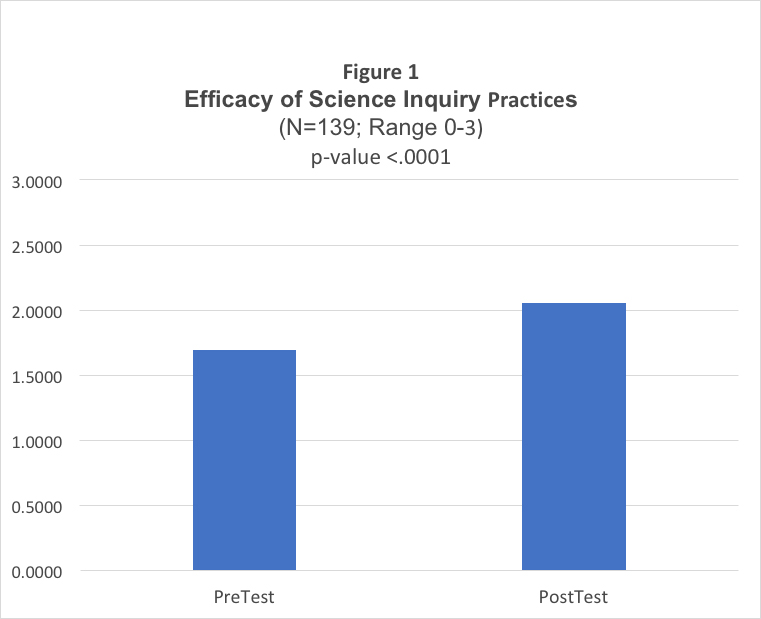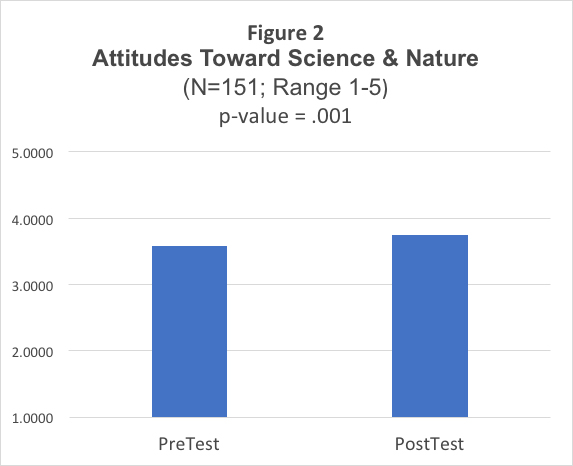Feature
Science Investigation and Developing Students’ Science-Process Skills Through Citizen Science
Connected Science Learning April-June 2018 (Volume 1, Issue 6)
By Jennifer Fee
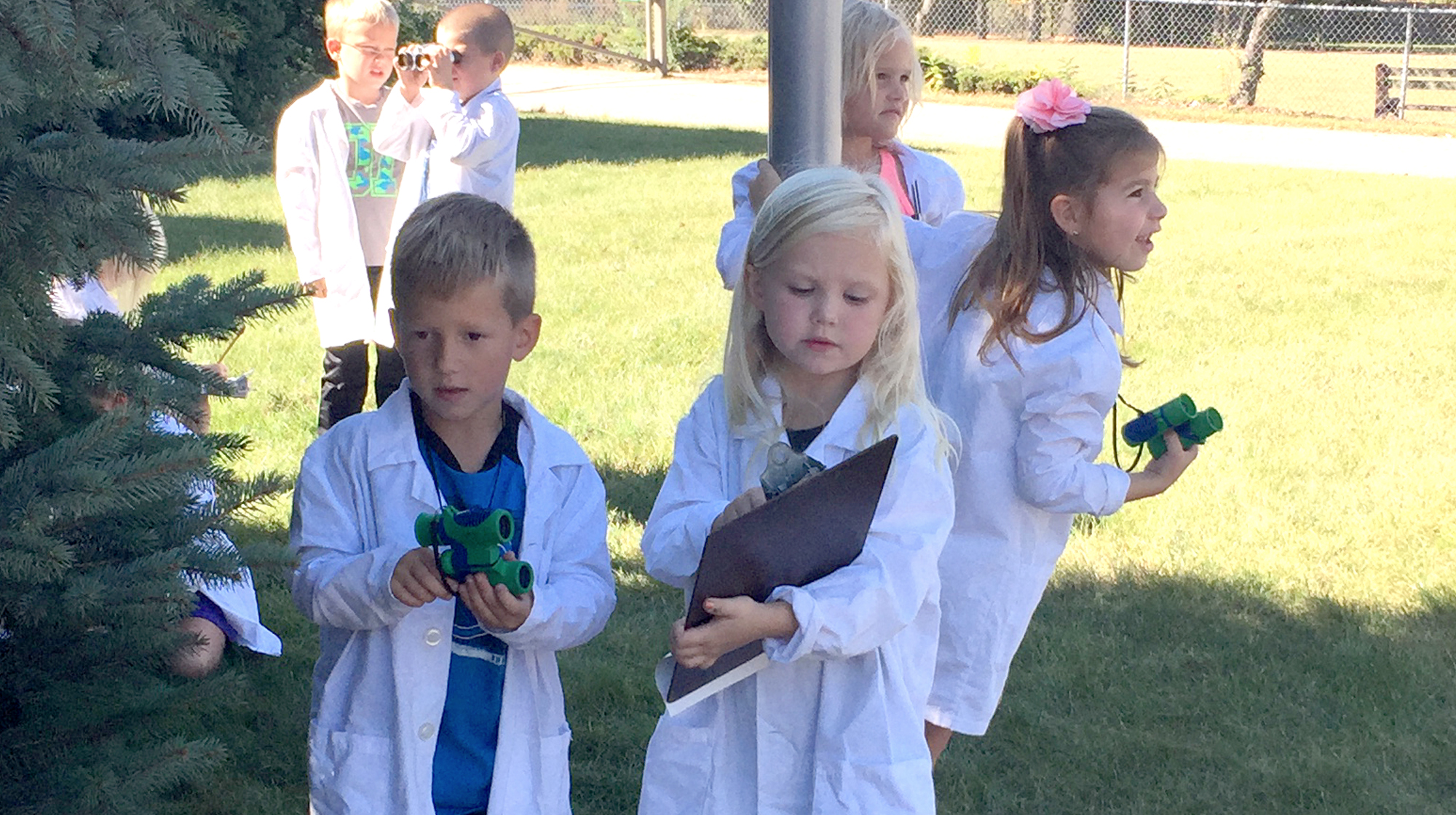
It’s 7:15 on a Friday morning and the ‘early birds’ have arrived. Eager students don their binoculars for Ms. Vigeland’s before-school birdwatching club. Ranging from fourth to eighth grade, these Hilltop Country Day School students gather every week to fill in their data sheets with bird species they identify for eBird, a citizen science project offered by the Cornell Lab of Ornithology. “I started Early Birds because my former and current students just couldn’t get enough of bird watching,” Ms. Vigeland said. “My students’ observational skills have grown so much since September. Now they look for beak color, field marks, and size.”
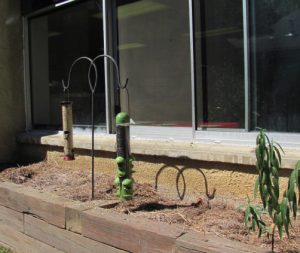
Many of Hilltop’s classrooms have large windows with a view into the courtyard and garden of the school. Each year, students do some type of garden enhancement for Earth Day. On one occasion, the students added bird feeders outside the third-grade classroom window. Two weeks after adding the feeders, however, the students were disappointed to find that no birds had visited them. They wondered: Did the birds not like the seed? Was it too hot by the window? Was the lack of water discouraging birds? Ms. Vigeland asked the kids to problem solve. First, students brainstormed designs for an ideal bird feeding area. Then, they drew diagrams of the space and outlined the food, water, and cover they thought might better attract birds. Over time, they implemented these improvements in the school yard, including patches of wildflowers and shrubs that provide food and cover. The birds (along with bees, butterflies, and other wildlife) have started to visit the habitat, to the delight of students.
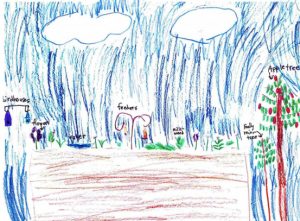
Jodi Sikma, a K–4 STEM teacher at Hamilton Community Schools in Michigan, reaches her “junior ornithologists” both in the classroom and after school. In spring 2017, she began using BirdSleuth’s Habitat Connections curriculum kit in her classroom to teach habitat and diversity content, in part through citizen science participation. Ms. Sikma recalled, “It was hard to wipe the smile off my face at the end of each day. We kept it pretty simple—remember, I was learning too—and just did basic observations, bird counting, and nest watching on our school grounds. I dabbled with the NestWatch project and confirmed … [that] birds are an accessible way to motivate kids to go outside and observe their environment, connect to their habitat, and understand the importance of where they live.” In fall 2017, she decided to start the “Early Bird Club” for second- through fourth-grade students to encourage more in-depth inquiry and build STEM skills. The club has been exploring how to build feeders, where to put them, how to protect them, and which birds visit. They take walks around the school yard looking for birds and evidence of birds. Ms. Sikma challenged the kids to design a feeder that could successfully feed birds all winter. They count the birds that visit and submit the data to Project FeederWatch. Ms. Sikma and her students both benefit. Ms. Sikma stated:
"I am in a position where I get to work with kids in the classroom every day AND with kids in an informal out-of-school setting. I used my small group of Early Bird Club members to “test the waters” for a citizen science project. Having a smaller group made it less intimidating as I was learning how to do it myself. Now that I have gone through the Inquiry class, been to a Habitat Connections training, and worked with BirdSleuth, I am more confident to use those resources with my club and my school classes. I have also felt the benefit of those club kids being leaders back in their classes. They have experienced the inquiry protocols, and when it comes time to run investigations in our classroom, they are natural, experienced leaders.”
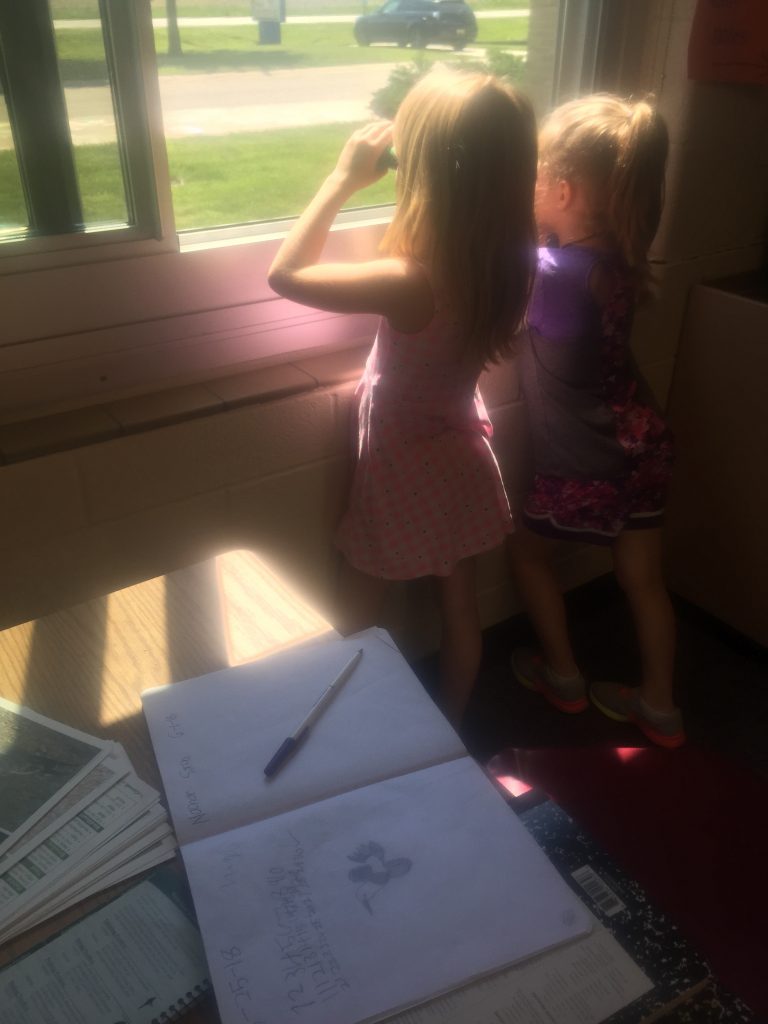
When her students noticed that there were plenty of birds around but none were coming to the feeders, they created makeshift birdbaths out of stacked paint trays. As they collected data over the next two weeks, the kids observed birds using their birdbaths and documented an upswing in the overall bird counts, concluding that water attracted the birds. This provided a valuable reinforcement to the concept that water is a key part of habitat. Currently, Ms. Sikma is working to scaffold engineering experiences tied to the Next Generation Science Standards (NGSS) in her district. She has found that the science practices developed within the Integrating Inquiry online course she took have provided a roadmap to connect to engineering design aspects of the investigations, such as building feeders. Ms. Sikma described it a “natural fit” because her club “[works] very intentionally to tie … STEM work with the natural world.”
The value of citizen science
Citizen science projects involve the public as participants in real-world scientific research. As one seventh grader put it, “Scientists can’t be everywhere, so kids from all over can record data and send it in.” Over 1,000 different citizen science projects are currently listed in the SciStarter Project Finder database. Citizen science observations of birds, frogs, plants, insects, and weather, among other things, help document biological and environmental trends over regions and timelines far broader than scientists could tackle on their own. Phil Kahler, a teacher who uses the eBird citizen science project with his middle school students in Oregon, explained, “It is especially exciting to see how citizen science motivates my students. They know their bird observation data can answer real-world questions, and they are contributing to the global scientific community.” Participation can also inspire environmental action. For example, students participating in East Bay Academy for Young Scientists (EBAYS) in and out of school collect water-quality data that have contributed to managing and improving the riparian area they studied: Their findings showed lack of biodiversity and high levels of toxins in the creek, the group worked with local authorities and took direct actions by removing trash and invasive species and planting native species—turning a dumping site into a more parklike space valued by neighbors (Ballard, Dixon, and Harris 2017).
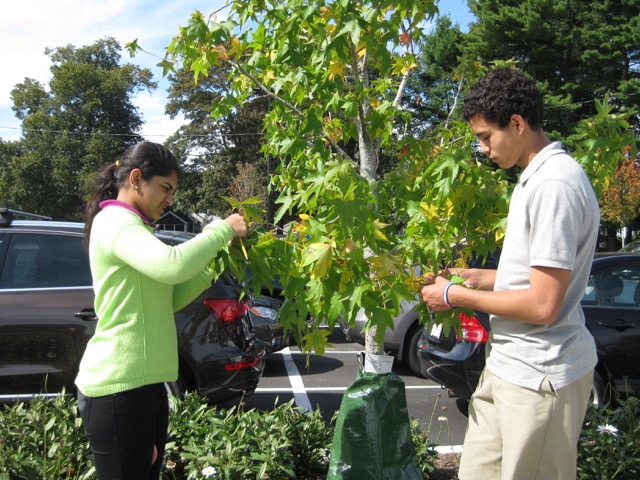
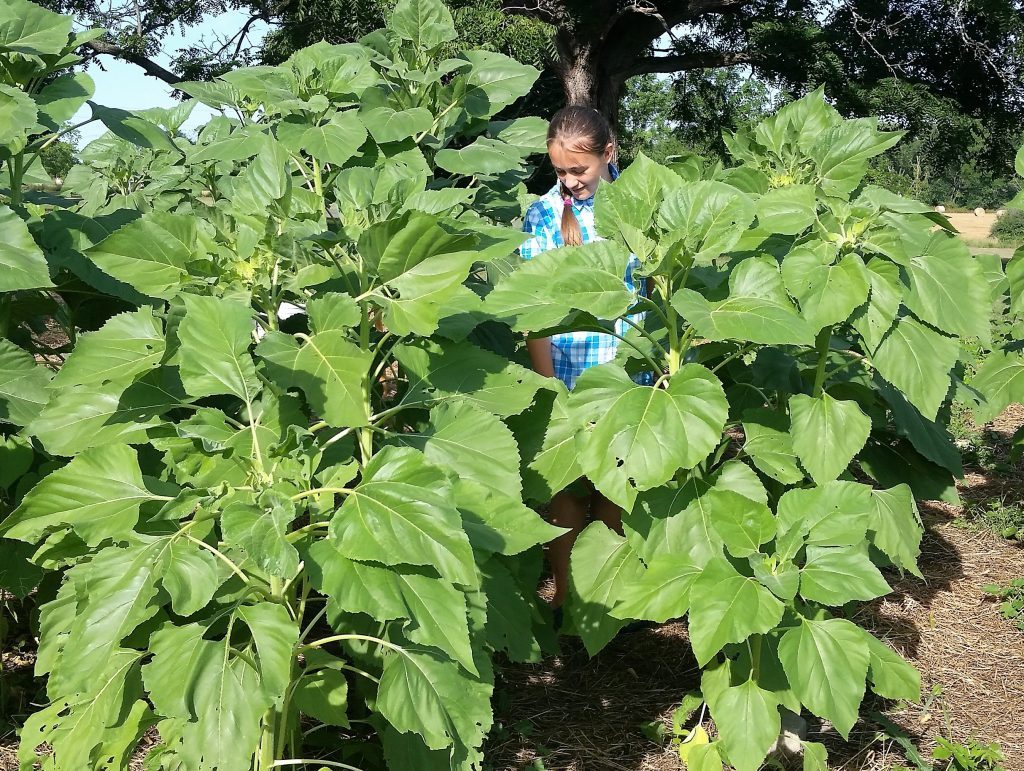
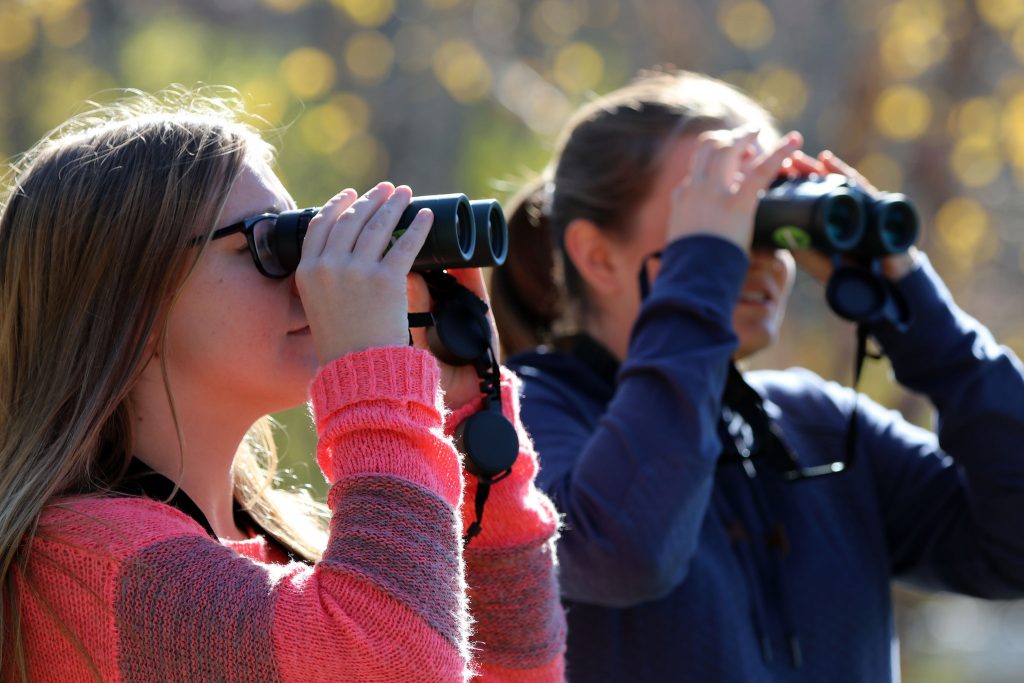
Citizen science data collection can be as simple as looking out a window and recording which birds come into view, or as complex as capturing and tagging turtles for mark and recovery studies. Youth can participate in a single event or a series of samplings across several seasons or years. Data can be collected in virtually any setting—urban or rural, indoors or out—through closely observing some aspect of the natural world. Such observations ignite curiosity and lead youth to pose questions, providing an ideal jumping off point for inquiry. When children ask questions about the world around them and identify problems that need solutions, their research becomes inherently relevant to their interests and their lives (Trautmann et al. 2013). Many educators have shared that offering these in-depth learning opportunities, especially in out-of-school hours, provides time and space for students to dig deep, ask questions, discover problems, and look for solutions.
“One of our fourth graders decided to sit out by the feeders before school today with a couple of younger club members on her own. She came to me later and said, ‘Ms. Sikma, I have my own question. I wonder if the height of the feeder is going to make a difference with the birds we have out there.’ I nearly started weeping tears of joy. I told her to write that down quickly in her notebook before she forgot. She followed with, ‘Oh, I already did and I wrote down what I think the answer is.’ I said, ‘Let’s set up your investigation!’ Oh my goodness … this is working!”
—Jodi Sikma, K-4 teacher and bird club leader
When students spend time outside observing, asking questions, drawing conclusions, and designing habitat improvement plans, they are genuinely engaged in the scientific and engineering practices spelled out in the NGSS. The NGSS emphasize a coherent integration of authentic science practices, crosscutting concepts, and content across grade levels, calling for all students to have opportunities to be actively engaged in investigating scientific phenomena and designing solutions to compelling problems (NRC 2012; NGSS Lead States 2013). Significant challenges exist for many classroom teachers and OST educators who wish to include these types of experiences in their programs, however. Educators who have used Cornell Lab’s citizen science programs and helped with the cocreation of educational materials have expressed concern about their lack of experience, limited funds for materials and equipment, data quality issues, and time constraints. Overall, very few teachers have experience with the science and engineering practices described in the NGSS, especially in elementary schools and schools that serve high percentages of low-income students. For students to understand inquiry and use it to learn science, their teachers need to be well-versed in inquiry skills and inquiry-based teaching methods, yet most teachers have not had opportunities to learn science through inquiry or to conduct scientific inquiries themselves (NASEM 2015).
Citizen science may help with such challenges, providing the spark and context for STEM observations and questions, scaffolds for data collection and exploration, and inviting educators to embrace their role as discoverers and colearners with youth. Especially when accompanied by authentic science investigations, citizen science provides ways for children to learn science content while engaging in real science practices (Fee 2015). But learning doesn’t just “happen” via project participation. Citizen science participants are unlikely to change their attitudes toward science unless they are given time and support in reflecting how their role relates to the processes of science (Bonney et al. 2015).
Inspiring investigations through citizen science
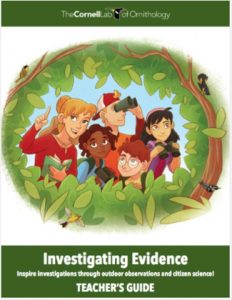
Educators at the Cornell Lab of Ornithology, working with teachers as advisors, field testers, editors, and coauthors, have developed resources to help educators overcome these challenges and gain confidence in engaging youth in citizen science and science investigations. These include Investigating Evidence, a freely downloadable curriculum that is complemented by an online course, Integrating Inquiry for Educators: Developing Student Science Practices. Both resources support engaging youth in all stages in the scientific process, from asking questions to drawing and sharing evidence-based conclusions and help educators meet the NGSS related to developing Science Practices. Crosscutting Concepts and Disciplinary Core Ideas can also be addressed, depending on the questions posed by students and the citizen science projects in which they participate. For example, students might look at questions related to habitat, phenology, or behavior focusing on birds, insects, or other organisms of their choice. The Investigating Evidence curriculum has been downloaded by over 6,000 educators, and approximately 150 educators have participated in the 20-hour, in-depth online course.
In summer of 2017, educators at the Cornell Lab of Ornithology undertook exploratory research into the impacts of citizen science–inspired investigations on student engagement and learning. Sixteen participants, approximately half classroom teachers and half OST educators, were recruited and given the Investigating curriculum and free enrollment in the Integrating Inquiry online course. We asked them to implement citizen science and science investigations with groups of fourth- through eighth-grade students. After taking the course, the educators used the Investigating Evidence curriculum to engage the children in their choice of citizen science projects and undertake science investigations that were typically designed by youth in collaboration with adult leaders. Participants elected to participate in a broad range of citizen science projects, including eBird, iNaturalist, Monarch Larvae Monitoring Project, Fold It, and EyeWire. All teachers reported using aspects of the Investigating Evidence curriculum such as the “I Wonder” Board to engage youth in investigations ranging from pillbug behavior to butterfly feeding preferences.
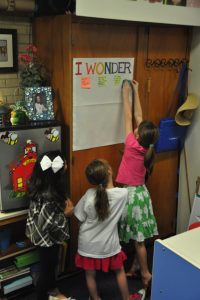
Participating teachers and their students responded to pre- and postsurveys. Nine educators submitted a total of 164 matched student pre- and postsurveys. Youth in these nine programs ranged from second to tenth grade and included two large groups of high school students (51 ninth graders and 46 tenth graders). Three programs were OST settings: a summer camp, an afterschool enrichment program, and Mrs. Sikma’s previously mentioned bird club. The remaining programs were classroom-based in both public and private schools.
Students responded to a total of 17 survey items on two scales:
- Efficacy of Science Inquiry Skills, 10 questions. Sample questions: “I can use scientific knowledge to form a question” and “I can record data accurately.” This was a 4-point scale with answers ranging from “never” (coded as 0) to “always” (coded as 4).
- Attitudes Toward Science and Nature, seven questions. Sample questions: “It’s fun to do science activities.” and “I like to identify things in nature.” This was a 5-point Likert scale (from “strongly disagree” to “strongly agree”).
Over the 10 questions on the Efficacy of Science Inquiry Skills scale, the mean response on the presurvey was 1.69 (putting students in the range between “never” and “sometimes”). This indicates that prior to the program, the students surveyed were at an overall beginner level for science-process skills. On the postsurvey, the mean across all questions was 2.05 (putting students in the low range between “sometimes” and “usually”). After participating in citizen science and investigations, youth showed an overall growth in their inquiry practices (see Figure 1, p. 10). Indeed, there were significant gains across all items except one (“I can use data to create a graph for presentation to others”) which showed a slight but non-significant increase.
Students (n = 139) also showed growth in positive attitude toward science and nature (see Figure 2). Of the seven items, these three showed significant positive gains:
- I like to identify things in nature (p = 0.005).
- I like talking about science with others (p = 0.001).
- Kids can collect data that scientists can use (p = 0.0001).
Students seemed to enjoy identifying things in nature, and as a result of participating in citizen science–inspired inquiry, students internalized that they could collect data for science.
In a voluntary survey of all educators who have completed the online course in the two years it has been available (n = 30), 100% “strongly agreed” or “agreed” that they
- felt prepared to use citizen science with youth,
- gained a better understanding of inquiry and scientific investigations,
- will use citizen science in their program or classroom, and
- would recommend the course.
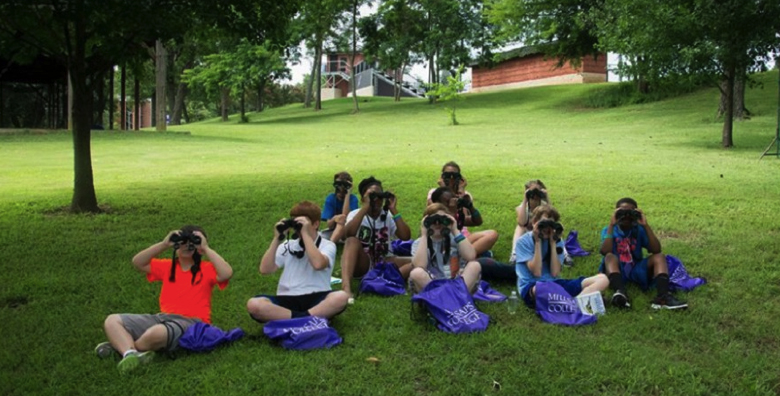
Final Thoughts
One key feature of the course is a series of discussion boards in which educators described their educational setting and experiences with citizen science in those settings. Participants especially appreciated the interactivity of the course and hearing from other practitioners. As one respondent put it, “My favorite part of the course was feeling surrounded by a virtual community of educators who are also passionate about incorporating inquiry into their educational programs.” An educator from an informal garden–based program added, “I’d recommend this course because it’s not targeted specifically at formal classroom educators—I found the collaboration and conversation across formal and nonformal venues to be one of the most useful aspects of the course.”
Teachers who use citizen science in their classrooms often find that their students are so interested that they want to keep going outside of school hours. Phil Kahler teaches science at Tualatin Valley Academy in Hillsboro, Oregon, where he maintains a large bird feeding station and observation blind. His students collect and submit bird observation data to eBird. His experience using citizen science started in the classroom and organically extended outside of the school day. Some of his students were self-motivated to try their own “big day”—an effort to see and hear as many bird species as possible within a 24-hour period. The group left at 3 a.m. and stopped at 8 p.m.: a full 17 hours of birdwatching and citizen science. The “Kestral Krew,” made up of eight enthusiastic students aided by two educators, covered over 200 miles to see wetland, coastal mountain, and beach habitats and identified 139 bird species in a single day! That summer, three teens from the Krew called Mr. Kahler to ask if he might join them for some birding at Fernhill Wetlands—and would he please bring some binoculars?
When students make careful observations through citizen science, questions naturally arise. Ten years ago, creative feeder-watching students in Mr. Kahler’s class decided to build a unique bird feeder over spring break: a vulture feeder. With tools and lumber, they built a large platform feeder and mounted it onto a 12-foot-high post. They placed a whole raw chicken on the platform. The students excitedly relayed their story to Mr. Kahler when they returned to school, showing him photos of vultures on their feeder to prove their success. Mr. Kahler remarked that these unexpected out-of-school activities “have been one of the highlights of [his] teaching career.”

Our surveys indicate that students can develop science process skills and interest in science and nature when provided with specific instruction and opportunities to participate in citizen science coupled with scientific investigation. Future work aims to explore differences in implementation and outcomes between formal and OST settings, and to document any teacher professional development outcomes. The open-ended and hands-on nature of these experiences seem to offer an ideal link between informal and formal learning, as well as authentic ways to drive informal student-directed exploration. Teachers described additional student benefits when they were offered the opportunity to participate, including developing leadership abilities, making habitat improvements and exploring and documenting their outcomes, and participating in authentic, student–driven inquiry. Both in school and out, youth who participate in citizen science notice and document patterns, pose questions, and can be encouraged to seek answers. They are truly doing science and seeing its relevance to their daily lives.
Acknowledgments
Thank you to the many educators who have field-tested and worked with us to develop and improve BirdSleuth K–12 resources. A special thanks to the teachers mentioned in this article (Jodi Sikma, Janet Vigeland, and Phil Kahler) and the educators who participated in the Citizen Science Investigators project. Thank you to the staff and undergraduate student employees at Cornell Lab of Ornithology for providing invaluable support during the project and to known and anonymous reviewers for feedback on this manuscript. A special thanks to Tina Phillips for her advice on the evaluation and work on data analysis.
Jennifer Fee (jms327@cornell.edu) is manager of K–12 Programs at Cornell Lab of Ornithology in Ithaca, New York.



